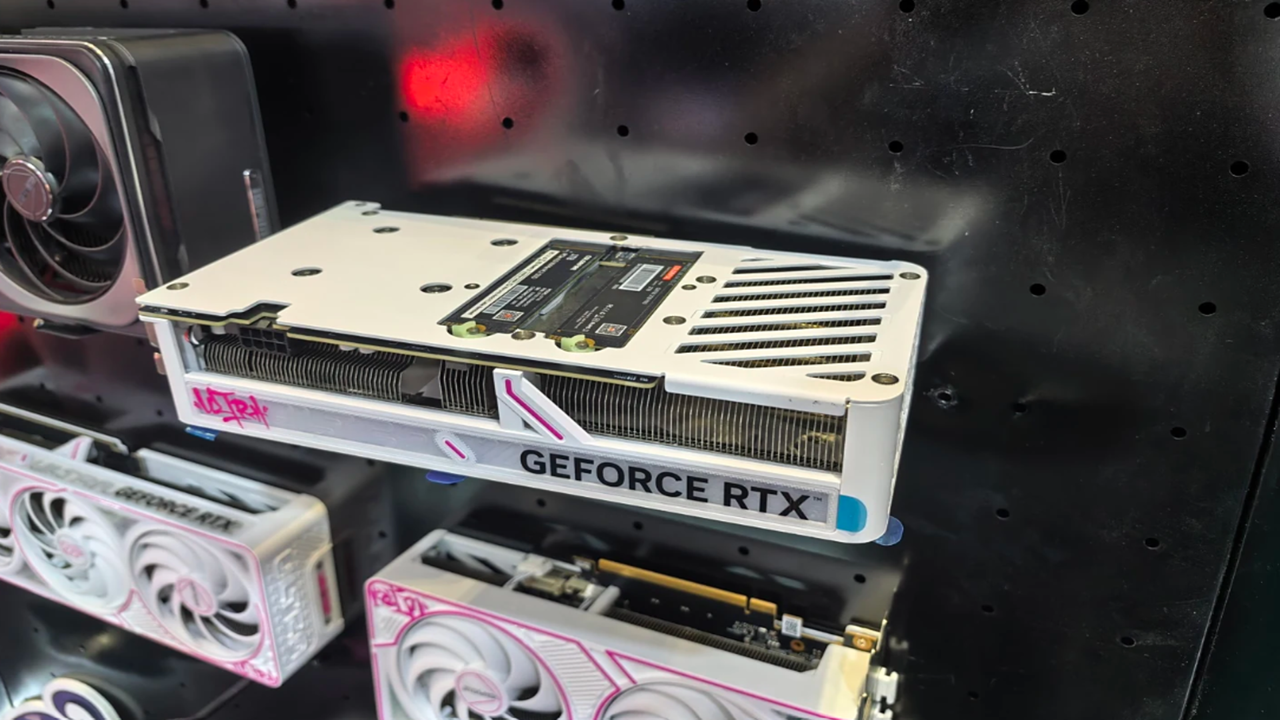A Unique Approach to Graphics and Storage Integration
Colorful has introduced an unconventional product at Bilibili World 2025, a graphics card from its iGame Ultra series that integrates two M.2 SSD slots directly onto the PCB. This hybrid design aims to combine storage and graphics processing in a single unit, but it raises questions about practicality and long-term value.
The integration of storage and graphics processing may seem efficient for compact systems, but it introduces several challenges. The card is likely based on Nvidia’s GB206 or GB207 silicon, possibly aligning with the RTX 5050 or 5060. However, this configuration positions the card firmly in the mid-range category, far from what most would consider the best GPU tier.
Key Features and Design Considerations
One of the standout features of this card is the presence of dual M.2 SSD slots on its backside, near the I/O bracket. These slots allow users to install drives without separate cabling, which could be beneficial for builders working with limited motherboard M.2 slots or compact ITX cases. The slots are supported by mounting points for heatsinks and are cooled by the same dual-fan system that manages the GPU itself.
By using PCIe bifurcation, the card splits a single x16 slot into eight lanes for graphics and four lanes each for the SSDs. This setup aims to preserve bandwidth for both functions while reducing the need for additional expansion cards. However, the benefits of this layout may not justify the compromises.
Challenges and Limitations
Attaching storage directly to a GPU introduces additional layers of complexity in system configuration, including BIOS support, lane sharing, and upgrade constraints. Storage and graphics are typically upgraded on separate timelines, and combining them on a single board limits that flexibility. For example, if a user wants to upgrade their GPU, they might also need to replace the SSDs, even if they are still functional.
The cooling arrangement suggests that SSD thermals will be actively managed under load, but this does not necessarily translate to better performance. The SSD slots are unlikely to support the largest SSD capacities or deliver the best SSD speeds on the market. Additionally, the GPU itself, based on its probable architecture, is not aimed at top-tier performance.
This puts the product in a narrow use case, offering integration without delivering leadership in either category. For users who care about maximizing storage capacity, pursuing the best GPU performance, or building for future flexibility, this design may offer more limitations than advantages.
Visual Appeal and Market Position
Visually, the card adopts a clean, matte-white aesthetic that stands apart from the more common darker GPU designs. While this may appeal to custom PC builders who prioritize appearance, the core performance considerations remain unchanged. The design is technically interesting, but it is not yet clear why such a product needs to exist beyond novelty.
Final Thoughts
As of now, the company has not provided detailed specifications or pricing, and without this information, the card appears more experimental than practical. For most desktop system builders, shared PCIe bandwidth creates more complications than benefits. The idea of mounting SSDs on a GPU may seem innovative, but it ultimately limits the ability to upgrade graphics and storage independently.
For those looking to build a system that prioritizes flexibility and performance, this design may not be the best choice. Instead, opting for separate components allows for greater customization and future-proofing. While the Colorful iGame Ultra mid-range GPU is an intriguing concept, it may not be the right fit for everyone.






